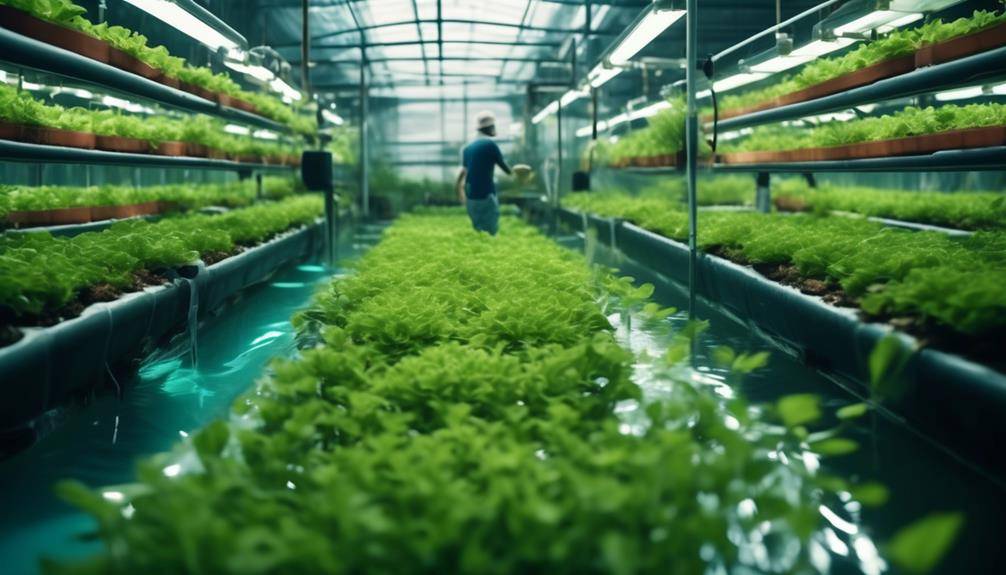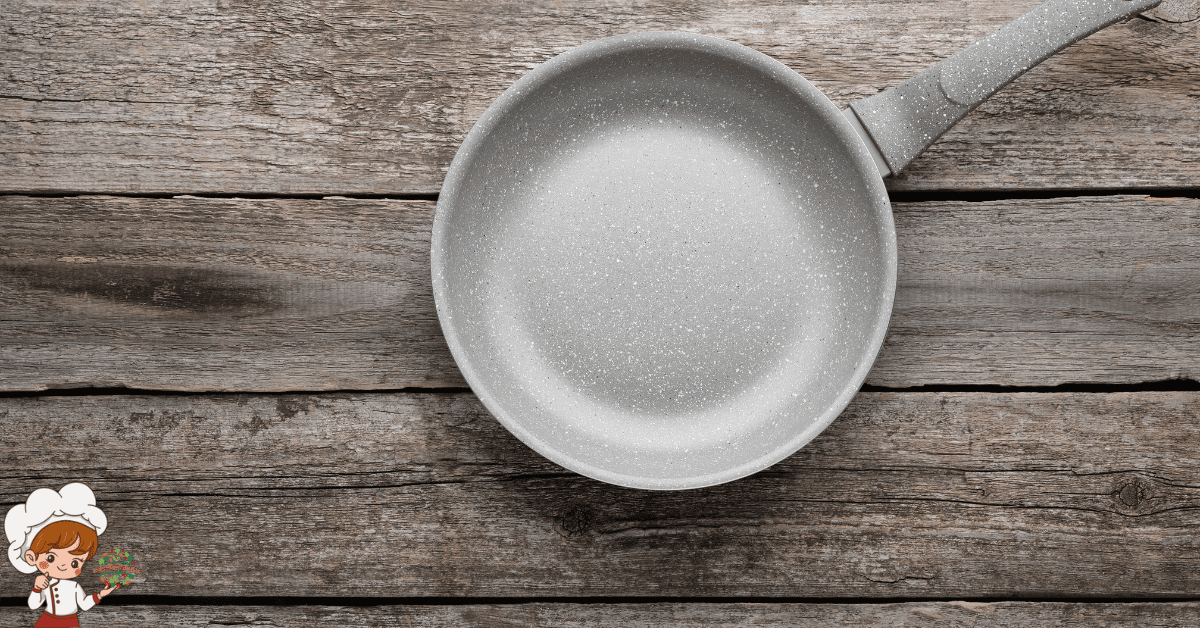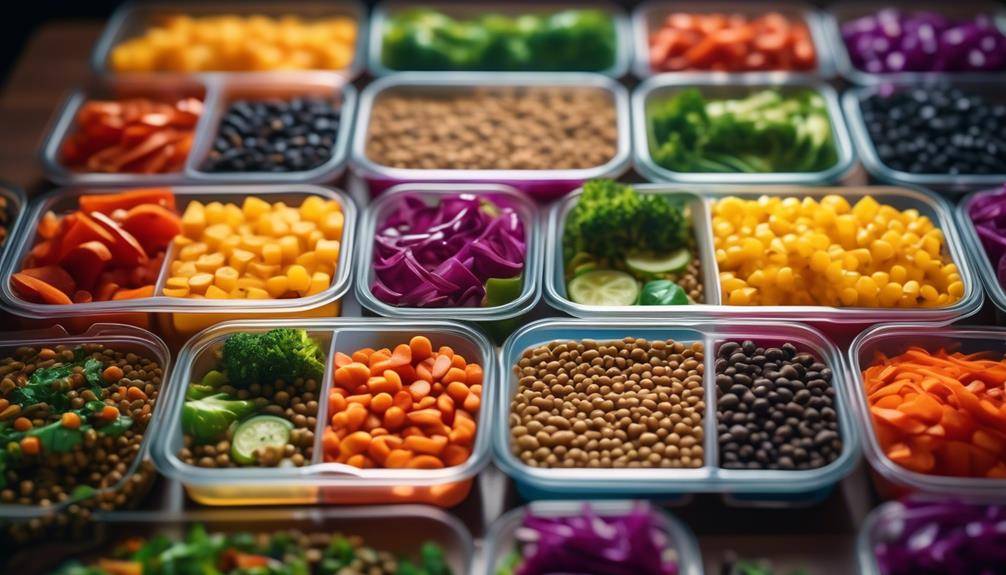Aquaponics Technology In Commercial Farming

Aquaponics Technology In Commercial Farming; Are you a farmer pondering the possibilities of aquaponics technology in your commercial operation? Aquaponics, an innovative farming method that combines aquaculture and hydroponics, has been gaining traction in recent years for its potential to increase productivity and sustainability. But what exactly is aquaponics, and how can it benefit your farm? In this discussion, we will explore the components of an aquaponics system, the selection of fish and plants, the design and setup of an aquaponics farm, and the challenges and limitations of this technology. Whether you’re a seasoned farmer or a curious entrepreneur, this exploration of aquaponics in commercial farming will leave you intrigued and inspired.
What Is Aquaponics Technology?
Aquaponics technology is a sustainable farming method that combines aquaculture and hydroponics to create a mutually beneficial system where fish waste is converted into nutrients for plants, while the plants filter and purify the water for the fish. This innovative technique offers numerous advantages and has a wide range of applications.
One of the main advantages of aquaponics technology is its high efficiency in resource utilization. By integrating fish farming with plant cultivation, this system optimizes the use of water, energy, and nutrients. Compared to traditional farming methods, aquaponics requires significantly less water, as the water in the system is continuously recycled and reused. This makes it an ideal solution for regions facing water scarcity. Moreover, the plants obtain their nutrients directly from the fish waste, eliminating the need for chemical fertilizers. This not only reduces the environmental impact but also lowers production costs.
Aquaponics technology has a diverse range of applications. It can be used in both commercial and residential settings. In commercial farming, aquaponics offers a sustainable alternative to conventional agriculture by enabling the production of both fish and vegetables in a single system. This integrated approach maximizes profits and minimizes the negative impact on the environment. Additionally, aquaponics systems can be set up in urban areas, allowing for local production and reducing the carbon footprint associated with long-distance transportation of food.
Benefits of Aquaponics in Commercial Farming
Aquaponics technology offers significant benefits for commercial farming. One of the key advantages is the increased crop yield that can be achieved through this system. By combining aquaculture and hydroponics, aquaponics provides an efficient and sustainable farming solution that maximizes the use of resources and minimizes waste.
Increased Crop Yield
By implementing aquaponics technology in commercial farming, you can significantly increase crop yield while maximizing resource efficiency. Aquaponics offers several advantages that contribute to increased profitability and environmental sustainability:
- Nutrient-rich water: Aquaponics utilizes fish waste as a natural fertilizer for plants. The nutrient-rich water continuously circulates through the system, providing plants with a constant supply of nutrients. This ensures optimal growth and higher crop yields.
- Year-round production: Aquaponics systems can be operated indoors or in controlled environments, allowing for year-round production regardless of external weather conditions. This extends the growing season and enables multiple harvests, further increasing crop yield.
- Water conservation: Aquaponics uses up to 90% less water compared to traditional soil-based farming methods. The water is recirculated within the system, minimizing water wastage. This not only conserves a precious resource but also reduces costs associated with irrigation.
Sustainable Farming Solution
Implementing aquaponics technology in commercial farming provides a sustainable solution that offers numerous benefits for maximizing crop yield and resource efficiency. Aquaponics is one of the most promising alternative farming methods that combines aquaculture (fish farming) with hydroponics (soilless plant cultivation). The system works by utilizing the waste produced by the fish as a nutrient-rich fertilizer for the plants, while the plants naturally filter the water for the fish. This closed-loop system reduces water usage by up to 90% compared to traditional farming methods and eliminates the need for synthetic fertilizers and pesticides.
Additionally, aquaponics decreases the risk of soil contamination, as plants are grown in a soilless environment. From an economic perspective, aquaponics offers great potential for commercial farming due to its high productivity and year-round crop production, making it a financially viable and sustainable farming solution.
Components of an Aquaponics System
To build a functional aquaponics system, you will need several key components that work together to create a sustainable and efficient farming environment.
- Fish Tank: The fish tank is the heart of the aquaponics system. It provides a habitat for the fish and serves as a source of nutrient-rich water for the plants. The size of the fish tank will depend on the number and type of fish you plan to raise. It should be designed to provide optimal conditions for the fish, including temperature control and adequate oxygenation.
- Grow Beds: The grow beds are where the plants grow. They are filled with a growing medium, such as gravel or expanded clay pellets, and are flooded with water from the fish tank. The plants extract the nutrients they need from the water, effectively filtering it for the fish. The design and size of the grow beds will depend on the types of plants you wish to grow and the available space.
- Water Pump and Filtration System: A water pump is needed to circulate the water from the fish tank to the grow beds and back. It ensures that the plants receive a constant supply of nutrient-rich water. A filtration system is essential to remove any solids or waste from the water before it is returned to the fish tank. Regular maintenance of the pump and filtration system is crucial to ensure the system operates efficiently.
Choosing the Right Fish and Plants for Aquaponics
What factors should be considered when selecting fish and plants for an aquaponics system? Fish selection and plant selection are critical aspects of creating a successful aquaponics system. When choosing the right fish, it is essential to consider factors such as water temperature, pH levels, and the desired growth rates. Different fish species have different temperature requirements, so it is crucial to select fish that can thrive in the specific environmental conditions of your aquaponics system.
Additionally, some fish species are more tolerant of fluctuating pH levels, while others require a more stable pH range. It is important to choose fish that can adapt to the pH levels you can maintain in your system. Furthermore, considering the growth rates of fish is essential to maintain a balanced ecosystem. Fast-growing fish may have higher nutrient requirements, which can affect the overall health of the system if not adequately managed. When it comes to plant selection, factors such as nutrient requirements, growth habits, and compatibility with the chosen fish species should be taken into account. Some plants, like lettuce and herbs, have low nutrient requirements and can grow well in aquaponics systems.
Others, like fruiting plants or those with higher nutrient needs, may require additional supplementation to thrive. It is also important to select plants that are compatible with the chosen fish species. For example, some fish may uproot or eat certain plants, so it is crucial to choose plants that can withstand these interactions. By carefully considering fish selection and plant selection, you can create a harmonious and productive aquaponics system.
Designing and Setting up an Aquaponics Farm
Designing and setting up an aquaponics farm requires careful planning and consideration of various factors to ensure optimal functionality and productivity. Here are three key designing considerations and cost analysis factors to keep in mind:
- System Size and Layout: Determine the size of your aquaponics farm based on your available space, budget, and production goals. Consider the number of fish tanks, grow beds, and filtration systems needed. Design the layout in a way that allows for efficient water flow, easy access to components, and proper utilization of space. A well-designed system will maximize productivity and minimize operational costs.
- Water and Energy Requirements: Analyze the water and energy needs of your aquaponics farm. Calculate the water volume required for fish tanks, grow beds, and filtration systems. Consider the availability of a reliable water source and the cost of water usage. Evaluate the energy requirements for pumps, lights, and other equipment. Optimize your system to minimize water and energy consumption, reducing operational costs and environmental impact.
- Material Selection and Cost Analysis: Choose suitable materials for your aquaponics farm that are durable, safe, and cost-effective. Consider the cost of materials such as fish tanks, grow beds, pipes, pumps, and filtration systems. Evaluate the long-term maintenance and replacement costs. Conduct a cost analysis to determine the overall investment required and the potential return on investment. Balancing quality with cost efficiency is crucial for the success of your aquaponics farm.
Maintaining Water Quality in Aquaponics
To maintain water quality in aquaponics, you need to implement effective water filtration techniques. This ensures that any solid waste, excess nutrients, or impurities are removed from the water, preventing harm to the fish and plants. Nutrient balancing methods are also crucial to ensure that the right amount of nutrients are available for the plants without causing imbalances or toxicity. Additionally, pH regulation strategies are necessary to maintain the optimal pH range for both fish and plants, as fluctuations can negatively impact their health and growth.
Water Filtration Techniques
In order to maintain optimal water quality in aquaponics, it is crucial to implement effective water filtration techniques. Here are three water filtration techniques that can help maintain water quality in your aquaponics system:
- Mechanical Filtration: This technique involves using physical barriers, such as screens or filters, to remove solid particles from the water. It helps in preventing clogging of the system and ensures that the water remains clear and free of debris.
- Biological Filtration: This technique relies on beneficial bacteria to break down harmful substances, such as ammonia and nitrites, into less toxic forms. By providing a suitable environment for these bacteria to thrive, such as biofilters or grow beds, you can effectively remove toxins from the water.
- Chemical Filtration: This technique involves using chemical substances, such as activated carbon or zeolite, to remove impurities from the water. These substances have the ability to absorb or neutralize pollutants, improving water quality in the process.
Implementing these water filtration techniques will not only help maintain water quality but also contribute to the overall success of your aquaponics system.
Nutrient Balancing Methods
To maintain optimal water quality in your aquaponics system, it is essential to effectively balance the nutrients within the water. Nutrient balancing methods play a crucial role in ensuring the success of hydroponic systems in organic farming. In aquaponics, the fish waste provides essential nutrients for the plants, but it is important to maintain the right balance. Excessive nutrients can lead to water pollution and harm the fish, while insufficient nutrients can hinder plant growth.
There are several methods to achieve nutrient balancing in aquaponics. One common approach is to monitor the nutrient levels regularly and adjust the fish feeding accordingly. Additionally, using mineral supplements or organic fertilizers can help replenish any deficiencies. By implementing these nutrient balancing methods, you can maintain water quality and promote healthy plant growth in your aquaponics system.
Ph Regulation Strategies
Implementing effective pH regulation strategies is crucial for maintaining water quality in aquaponics systems. pH monitoring systems and pH adjustment techniques play a significant role in ensuring that the pH levels remain within the optimal range for the fish, plants, and beneficial bacteria. Here are three key strategies for pH regulation in aquaponics:
- Continuous pH monitoring: Utilize pH monitoring systems to regularly measure the pH levels in the water. This allows for early detection of any fluctuations and enables prompt corrective actions.
- Buffering agents: Implement the use of buffering agents such as calcium carbonate or potassium bicarbonate to stabilize the pH levels. These agents help maintain a consistent pH and prevent sudden changes.
- Acidification and alkalization techniques: When necessary, adjust the pH levels by adding acids (e.g., citric acid, phosphoric acid) or bases (e.g., potassium hydroxide, sodium bicarbonate) to the system. This helps restore the desired pH range and promotes a healthy environment for the fish and plants.
Nutrient Management in Aquaponics
Proper management of nutrients is essential for the successful operation of an aquaponics system. Nutrient cycling is a key process that allows for the efficient use of resources and ensures the optimal growth of both plants and fish. In aquaponics, fish feed serves as the primary source of nutrients for the plants. The fish excrete waste, which contains essential nutrients such as nitrogen, phosphorus, and potassium. These nutrients are then converted by nitrifying bacteria into forms that can be readily absorbed by plants. This process, known as the nitrogen cycle, plays a crucial role in maintaining the nutrient balance in the system.
To effectively manage nutrients in aquaponics, it is important to monitor and control the amount of fish feed given to the fish. Overfeeding can lead to an excess of nutrients in the system, which can cause water quality issues and affect plant growth. Underfeeding, on the other hand, can result in nutrient deficiencies and hinder plant development. Therefore, it is necessary to strike a balance and provide the fish with the right amount of feed based on their growth rate and the nutrient requirements of the plants.
In addition to fish feed management, other strategies can be employed to optimize nutrient cycling in aquaponics. These include regular water testing to monitor nutrient levels, adjusting the pH of the system to ensure nutrient availability, and incorporating supplementary nutrient sources such as organic matter or mineral supplements. By implementing these nutrient management practices, aquaponic farmers can maximize the efficiency of nutrient utilization, promote healthy plant growth, and maintain a sustainable and productive system.
Challenges and Limitations of Aquaponics Technology
Aquaponics technology presents several challenges and limitations that can impact its successful implementation in commercial farming. While it offers a sustainable and efficient way of producing food, it is important to be aware of the obstacles that may arise. Here are three key challenges and limitations of aquaponics technology:
- Technical Complexity: Implementing aquaponics systems requires a deep understanding of both aquaculture and hydroponics. The integration of these two disciplines can be complex, requiring expertise in water quality management, fish health, plant nutrition, and system design. The technical complexity of aquaponics can pose a challenge for farmers who may lack the necessary knowledge and experience.
- Initial Investment: Setting up an aquaponics system can be costly. The infrastructure required, such as tanks, pumps, filters, and grow beds, can be expensive, especially for large-scale commercial farms. Additionally, the cost of monitoring and maintaining water quality can add to the initial investment. This financial barrier can limit the adoption of aquaponics technology, particularly for small-scale farmers or those with limited resources.
- Limited Crop Options: Aquaponics systems are best suited for leafy greens, herbs, and certain fruiting plants. Crops that require a high nutrient content, such as root vegetables or grains, may not thrive in this system. The limited crop options can restrict the variety of produce that can be grown, limiting the market opportunities for farmers.
Understanding and addressing these challenges and limitations is crucial for the successful implementation of aquaponics technology in commercial farming. By overcoming technical complexities, finding ways to reduce initial investment costs, and exploring crop diversification techniques, aquaponics can become a more viable and sustainable option for food production.
Future Prospects of Aquaponics in Commercial Farming
To further explore the potential advancements of aquaponics technology in commercial farming, it is essential to consider the future prospects and opportunities that lie ahead. As the world population continues to grow, there is an increasing demand for sustainable and efficient agricultural practices. Aquaponics, with its ability to combine aquaculture and hydroponics in a closed-loop system, offers a promising solution.
One of the future opportunities for aquaponics in commercial farming is the potential for increased crop diversity. Aquaponics allows for the cultivation of a wide range of plants, including leafy greens, herbs, and even fruiting crops. This versatility gives farmers the flexibility to adapt to changing market demands and capitalize on niche markets.
Another future opportunity lies in the market potential of aquaponics. As consumers become more conscious about the environmental impact of their food choices, there is a growing demand for sustainably produced, pesticide-free, and locally sourced products. Aquaponics fulfills these requirements, making it an attractive option for consumers. Additionally, aquaponics systems can be set up in urban areas, reducing the need for long-distance transportation and providing fresh produce to local communities.
Furthermore, advancements in technology and automation offer exciting prospects for the future of aquaponics in commercial farming. Sensors and monitoring systems can be used to optimize water quality, nutrient levels, and overall system performance. This not only improves efficiency but also reduces labor requirements, making aquaponics more financially viable for large-scale commercial operations.
Aquaponics Technology In Commercial Farming; Frequently Asked Questions
What Are the Specific Requirements for Setting up an Aquaponics Farm in Terms of Space, Infrastructure, and Resources?
To set up an aquaponics farm, you’ll need ample space for the system and its components. Infrastructure requirements include tanks, filters, and grow beds. Resources like water, fish, and plants are essential for a successful operation.
How Does Aquaponics Technology Compare to Traditional Farming Methods in Terms of Productivity and Profitability?
When comparing productivity and profitability, aquaponics technology offers potential advantages over traditional farming methods. Its closed-loop system allows for efficient resource utilization, scalability, and year-round production. Sustainability and minimal environmental impact are additional benefits.
Can Aquaponics Systems Be Customized to Suit Different Types of Crops or Plants?
Aquaponics systems can be customized to suit different crops or plants. The customization options allow for precise control over factors like nutrient levels and water temperature. However, there may be limitations in terms of compatibility with certain plant species.
What Are the Potential Risks and Challenges Associated With Maintaining Water Quality in Aquaponics Systems?
Maintaining water quality in aquaponics systems can be challenging. Potential risks include nutrient imbalances, pH fluctuations, and disease outbreaks. Regular monitoring, proper filtration, and biosecurity measures are crucial in ensuring optimal water conditions for the plants and fish.
Are There Any Regulations or Certifications That Commercial Aquaponics Farmers Need to Adhere To?
To adhere to regulations and certifications, commercial aquaponics farmers must meet specific requirements. These standards ensure productivity, profitability, and customization. However, they also present risks and challenges that farmers must navigate in order to succeed in the industry.
Conclusion
In conclusion, aquaponics technology offers numerous benefits for commercial farming. It provides a sustainable and efficient method of cultivation by combining fish farming with hydroponics. The system’s components, fish and plant selection, and proper design and setup are crucial for its success. Maintaining water quality and nutrient management are key considerations for optimal growth. While aquaponics presents challenges and limitations, its future prospects in commercial farming are promising, as it offers a viable solution for sustainable and eco-friendly food production.








